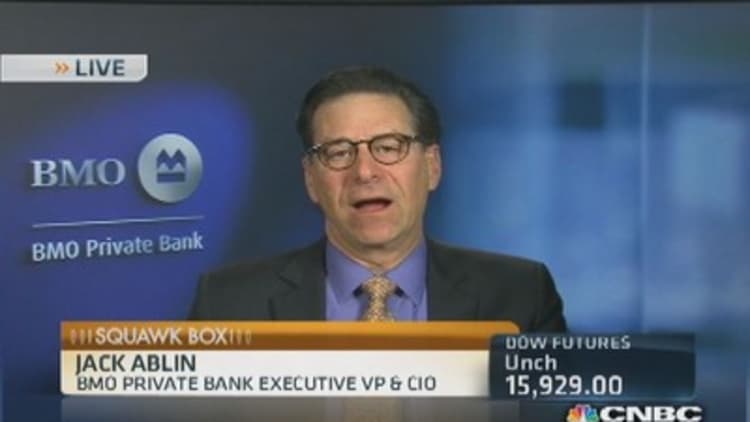
The recent volatility in stocks signals that the market is in a period of adjustment to the Federal Reserve's move toward more normalized monetary policy, said Barry Knapp, head of U.S. equity portfolio strategy at Barclays.
The adjustment had been expected in the fourth quarter last year, he said Wednesday on CNBC's "Squawk Box."
"We [now] think it's going to happen in the first part of this year."
Knapp turned bearish a little too early last year but changed his mind after the Fed surprised Wall Street in September by not starting to taper its bond-buying program. "We bumped our price target by a couple hundred points and figured the market would race into the end of the year."
He estimated the will finish 2014 at 1,900, which would be a 4.5 percent increase from Tuesday's close but only 2.8 percent higher for the entire year.
The period of adjustment will eventually give way to a stronger finish for the year, he predicted.
(Read more: Historic bull market only in 'middle innings': JPM's Lee)
Stocks bottomed out for the year on Feb. 3, after the worst February start since 1982 for the Dow Jones Industrial Average and since 1933 for the S&P 500. Since then, the Dow and the S&P are each up about 4 percent.
The market turned in a strong rally Tuesday on reassuring comments before Congress from new Fed Chair Janet Yellen that the central bank will continue its policy of providing monetary stimulus to bolster the economy.
The current pace of the Fed's asset purchases is $65 billion a month, after two $10 billion reductions in December and January.
"When I look at Yellen's testimony yesterday, we got a nice rally in the equity market, extending the four-day move, which was really off ... a very oversold condition," Knapp said.
In the bond market, the five-year part of the Treasury curve is forecasting unrealistic expectations, he said. "If you look at how the market is pricing out Fed rate hikes once they get started … the market only expects [the Fed] to go up 1 percent per year. They never go that slowly."
Yellen did say it's likely the Fed will have to keep rates near zero "well past the time" that unemployment crosses below the 6.5 percent threshold, which had been set more than a year ago as benchmark for possible monetary tightening. The jobless rate was at 6.6 percent in January.
—By CNBC's Matthew J. Belvedere. Follow him on Twitter @Matt_SquawkCNBC.


